Monthly Archives: January 2019

 Most people have heard of “flesh-eating infections” caused by group A Streptococcus, scientifically known as Streptococcus Pyogenes. These days, these are the big headline grabbing diseases, but 150 years ago, the biggest headline grabber was Scarlet Fever. Whenever people heard of this disease, their blood ran cold. During the Victorian era in the United States and Europe. Scarlet fever killed United States children in the 1920s, 1930s and 1940s. Of the children who contracted the disease, thousands died.
Most people have heard of “flesh-eating infections” caused by group A Streptococcus, scientifically known as Streptococcus Pyogenes. These days, these are the big headline grabbing diseases, but 150 years ago, the biggest headline grabber was Scarlet Fever. Whenever people heard of this disease, their blood ran cold. During the Victorian era in the United States and Europe. Scarlet fever killed United States children in the 1920s, 1930s and 1940s. Of the children who contracted the disease, thousands died.
It was in about 1949 that my mother, Collene Byer Spencer contracted the disease. It was still a terrifying situation for the family. My grandparents had nine children, and having one get Scarlet Fever put the rest of the children in danger too. Scarlet Fever can cause long-term complications as a result of Scarlet Fever include kidney disease, rheumatic heart disease, and arthritis. Following my mom’s bout with Scarlet Fever, she developed a heart murmur that she did not have prior to the disease. She was sick a long time, and in reality, they almost lost her. She spent a long period of time delirious from the fever, barely knowing anything that was going on around her. Even after she recovered, it would be a number of years before she had much strength. Her hearing suffered from the Scarlet Fever too. She could hear, but she had such a ringing in her ears that it made hearing the words being spoken to her very difficult. I have not heard that any of her siblings caught the disease, so I think they must have quarantined mom from the others during the disease.
The bacterial infection that causes Scarlet Fever often starts with strep throat and skin infections. Certain strep  bacteria produce a toxin that can cause a red rash—the “scarlet” of scarlet fever. Scarlet fever is usually a mild illness that most commonly affects children between 5 and 15 years old…these days. The streptococcus bacteria that caused strep throat infections were genetically different than the strains around today, and they could cause children to become very sick and die. In years gone by, the schools implemented throat cultures to detect strep throat before it could develop into Scarlet Fever. A few years back, they stopped that because they thought it was wiped out. As a mom who did throat cultures, that makes me nervous. Such a simple test to protect from such an awful disease, and such a simple medicine…Penicillin to get rid of it, was a no brainer.
bacteria produce a toxin that can cause a red rash—the “scarlet” of scarlet fever. Scarlet fever is usually a mild illness that most commonly affects children between 5 and 15 years old…these days. The streptococcus bacteria that caused strep throat infections were genetically different than the strains around today, and they could cause children to become very sick and die. In years gone by, the schools implemented throat cultures to detect strep throat before it could develop into Scarlet Fever. A few years back, they stopped that because they thought it was wiped out. As a mom who did throat cultures, that makes me nervous. Such a simple test to protect from such an awful disease, and such a simple medicine…Penicillin to get rid of it, was a no brainer.

 My nephew, Chris Iverson is a man who largely thinks like me. We agree on so many points, from politics to leisure time. I always like to talk to a person with a logical mind, and that is exactly what Chris has. At the risk of upsetting the “please no more politics” people among my readers, I must say that Chris is a conservative, with a level head, who isn’t fooled by the Liberal media. That can be refreshing when so many of the people you hear from around you are the polar opposite of that. Chris understands that the liberal politicians ideas simply will not work, and will break this nation. Chris gets that.
My nephew, Chris Iverson is a man who largely thinks like me. We agree on so many points, from politics to leisure time. I always like to talk to a person with a logical mind, and that is exactly what Chris has. At the risk of upsetting the “please no more politics” people among my readers, I must say that Chris is a conservative, with a level head, who isn’t fooled by the Liberal media. That can be refreshing when so many of the people you hear from around you are the polar opposite of that. Chris understands that the liberal politicians ideas simply will not work, and will break this nation. Chris gets that.
Nevertheless, that is not all Chris is about. A daddy of two children, Chris, along with his wife, Cassie, takes a hands on approach to parenting. Their son, Lucas needs extra help, because he was born with Down’s Syndrome, but that has never stopped Chris and Cassie from helping Lucas to be the best person he can be…even if that happens to be Batman. They are hands on with his needs, and work hard to help him perform as normally as possible. Their daughter, Zoey also helps her big brother to learn new things. She is one of his biggest fans.
Chris makes sure that his children get to spend as much time as possible with family, knowing that some of those grandparents and great grandparents may not be around for much longer. Taking the kids for visits is a great way to let them get to know their family, especially when they don’t all live in the same town. Much of the family also loves to go camping, so they get to see them there too.
The family loves the outdoors, and Chris gets them outside as much as possible. Chris loves to hike, camp, and 
 fish, and he is teaching his children to love those things too. Of course, living in Powell, Wyoming, they have a more limited season to do some of the outdoor things they like, but whenever possible, they are out there enjoying nature. I think that Chris’ outdoor lifestyle is a great way to raise the kids, and keep them strong with exercise, something which is very important for Lucas, for whom these things don’t always come easy. Chris and Cassie are great parents, and their children are very blessed to have them. Today is Chris’ birthday. Happy birthday Chris!! Have a great day!! We love you!!
fish, and he is teaching his children to love those things too. Of course, living in Powell, Wyoming, they have a more limited season to do some of the outdoor things they like, but whenever possible, they are out there enjoying nature. I think that Chris’ outdoor lifestyle is a great way to raise the kids, and keep them strong with exercise, something which is very important for Lucas, for whom these things don’t always come easy. Chris and Cassie are great parents, and their children are very blessed to have them. Today is Chris’ birthday. Happy birthday Chris!! Have a great day!! We love you!!
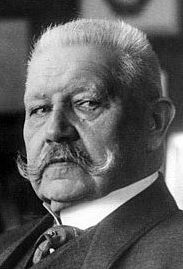
 On January 30, 1933, President Hindenburg appointed Adolf Hitler chancellor of Germany. It wasn’t because of any election, but rather by a constitutionally questionable deal dreamed up by a small group of conservative German politicians who had given up on parliamentary rule. Little did they know that they were party to appointing one of the worst dictators in history. Their attempt to return Germany to conservative authoritarian rule, backfired miserably when, within two years, Hitler and the Nazis outmaneuvered Germany’s conservative politicians to consolidate a radical Nazi dictatorship that was completely subordinate to Hitler’s personal will. I wonder if President Hindenburg wished he had never met Hitler, much less appointed him to be chancellor.
On January 30, 1933, President Hindenburg appointed Adolf Hitler chancellor of Germany. It wasn’t because of any election, but rather by a constitutionally questionable deal dreamed up by a small group of conservative German politicians who had given up on parliamentary rule. Little did they know that they were party to appointing one of the worst dictators in history. Their attempt to return Germany to conservative authoritarian rule, backfired miserably when, within two years, Hitler and the Nazis outmaneuvered Germany’s conservative politicians to consolidate a radical Nazi dictatorship that was completely subordinate to Hitler’s personal will. I wonder if President Hindenburg wished he had never met Hitler, much less appointed him to be chancellor.
Within days of taking power, the Nazis called for Germany to boycott all Jewish businesses. This unexpected anti-Jewish propaganda was the first of many. Hitler hated the Jewish people. He had no reason for his hatred. The Jewish people had done nothing to warrant Hitler’s hatred and rage. One theory is that Hitler had decided that the Jewish people were an inferior race. That is not such a new thought. It had happened before, to the African slaves in history, who had often been referred to as mud people. The Jews, as with the slaves, were treated horribly.
Another reason Hitler hated the Jewish people, was because following Germany’s loss of World War I, Hitler blamed the Jews and the communists living in Germany. He felt that they were part of a huge conspiracy against the German military. He believed that had it not been for their interference, Britain and the allies would have lost the war. Another possible reason for Hitler’s hatred of the Jews was probably jealousy. After World War I, he saw that a lot of Germans were without jobs and struggling. Instead of looking at the war as the root cause of the economic problem, he blamed the Jews for the sorry state of affairs. Because Adolf Hitler was truly insane, I’m sure that his reason to hate the Jewish people made sense to him, but the reality is that his insane mind was the only place that it made sense.
I’m not sure how he managed to get so many people to agree with is ideas, but somehow he did, and when he decided that all Jewish shops were to be boycotted, and stationed his SA Storm Troopers near the shops to 

ensure that his plans were carried out, they did as they were told. It wasn’t long after the boycotting of the shops that Hitler took things to the next level, and began hauling the Jewish people to the death camps. As long as he was alive, there was no end to his hatred, and that is definitely not what President Hindenburg or the conservative German politicians had in mind, and I’m sure they wished they had never done it.

 I never thought that I would have much interest in how a guitar was made, but my grandson, Caalab Royce is interested in building guitars, so of course, I became interested too. You do that with your children and grandchildren. Caalab showed me pictures of the guitars he wanted to make, and told me that he could buy a kit to build one, that would include all the parts. I truly believe there will come a day that he will build a guitar, and it will be beautiful, and sound beautiful. I might be
I never thought that I would have much interest in how a guitar was made, but my grandson, Caalab Royce is interested in building guitars, so of course, I became interested too. You do that with your children and grandchildren. Caalab showed me pictures of the guitars he wanted to make, and told me that he could buy a kit to build one, that would include all the parts. I truly believe there will come a day that he will build a guitar, and it will be beautiful, and sound beautiful. I might be  biased, but if my grandson makes it, I know it will be perfect.
biased, but if my grandson makes it, I know it will be perfect.
Recently, I stumbled across an article about a musical wood. That caught my attention. I wondered how wood could be musical. Of course, it couldn’t, as I already knew and went on to find out, but the Sitka Spruce tree is, nevertheless, the wood used for the vast majority of acoustic guitar, piano, violin, and other musical-instrument soundboards. That told me that the wood must have some kind of musical importance. I found out that the wood has excellent acoustic properties. The wood is light, soft, and yet, relatively strong and flexible. The Sitka Spruce is also used for general construction, ship building, and plywood.
Found mostly in Southeast Alaskan forests, the Sitka Spruce is being harvested at such a rate that the end of the instrument-quality supply is in sight. That doesn’t mean that the Sitka Spruce was becoming extinct, but it takes time to grow to some size, so the instrument-quality is becoming less available. The population of the Sitka Spruce is stable at this point, and it grows in Alaska, as well as Washington, Oregon, and California, 
 meaning that there is plenty of places to re-seed this important tree. It really is just a matter of waiting for the growth, and when you are talking about a tree, it’s very different than a puppy. You are talking years for a tree. A Sitka Spruce grows to around 88 feet in height after 50 years, to 157 feet after 100 years. That means that by the time the trees grow to usable size, the guitar builders of today will be long gone, so a new generation will be the ones to use the new growth. I hope that Caalab will have a chance to build a guitar out of Sitka Spruce before the wood is no longer available.
meaning that there is plenty of places to re-seed this important tree. It really is just a matter of waiting for the growth, and when you are talking about a tree, it’s very different than a puppy. You are talking years for a tree. A Sitka Spruce grows to around 88 feet in height after 50 years, to 157 feet after 100 years. That means that by the time the trees grow to usable size, the guitar builders of today will be long gone, so a new generation will be the ones to use the new growth. I hope that Caalab will have a chance to build a guitar out of Sitka Spruce before the wood is no longer available.
 Yesterday was National Holocaust Remembrance Day, I started thinking about all that happened to those poor victims of the Holocaust, and because yesterday was the day that the prisoners of Auschwitz were liberated, I began to contemplate what it must have been like for them as the exited that horrible camp. My guess is that their first thought was one of thankfulness that they had actually come out alive. Going into Auschwitz, I’m sure many had hopes that it would be just a camp for prisoners of war, and that they might be treated fairly, but as their friends began to disappear, never to return, I’m sure they knew to horrific truth. This was not a prisoner of war camp, is was a death camp, and the whole goal was to experiment, torture, and kill the prisoners. The people who worked there, were given authority to do as they pleased.
Yesterday was National Holocaust Remembrance Day, I started thinking about all that happened to those poor victims of the Holocaust, and because yesterday was the day that the prisoners of Auschwitz were liberated, I began to contemplate what it must have been like for them as the exited that horrible camp. My guess is that their first thought was one of thankfulness that they had actually come out alive. Going into Auschwitz, I’m sure many had hopes that it would be just a camp for prisoners of war, and that they might be treated fairly, but as their friends began to disappear, never to return, I’m sure they knew to horrific truth. This was not a prisoner of war camp, is was a death camp, and the whole goal was to experiment, torture, and kill the prisoners. The people who worked there, were given authority to do as they pleased.
As the prisoners were taken out of the camp, I’m sure there was a mixture of feelings…relief and guilt. Relief because they had lived through one of the worst atrocities in history…and guilt, because they had lived through one of the worst atrocities in history…while so many others did not. The guilt would have been horrible. Parents who made it out, while their children did not; children who made it out, while their parents did not. They were free, but homeless. They were weary, and many were sick or dying of starvation. The experiments performed on them probably left irreparable damage to their bodies and minds. I’m sure their thoughts were racing as the walked away from the worst time in their lives.
Their futures were uncertain. They didn’t know if they would be accepted in their home country, or if they  would have to immigrate to another country to find real freedom. And I’m sure that the worst thought was the possibility that it could happen again. Once something like the holocaust happened to a people, how could they possibly trust another nation again, and yet they would, because as horrible as the Holocaust was, there were many good people, and many good nations who were completely against the atrocities that happen during those years…people and nations who would never forget what happened. The Holocaust was an atrocity beyond the ability of most human beings ability to wrap their minds around, but it was something that was impossible to forget, for those who lived it. The horror they suffered would haunt them for the rest of their lives. It would be impossible to remove the nightmare they lived from their memory.
would have to immigrate to another country to find real freedom. And I’m sure that the worst thought was the possibility that it could happen again. Once something like the holocaust happened to a people, how could they possibly trust another nation again, and yet they would, because as horrible as the Holocaust was, there were many good people, and many good nations who were completely against the atrocities that happen during those years…people and nations who would never forget what happened. The Holocaust was an atrocity beyond the ability of most human beings ability to wrap their minds around, but it was something that was impossible to forget, for those who lived it. The horror they suffered would haunt them for the rest of their lives. It would be impossible to remove the nightmare they lived from their memory.

 Since she was a little girl, my niece Lacey Stevens has loved hair and makeup. After high school, Lacey went to Cosmetology School, and then began working in a couple of the salons in Casper, Wyoming. Then she was hired at Alta Beauty. As it turns out, Alta Beauty would place Lacey on the fast track to a huge success. Lacey was liked and respected immediately upon beginning her job there, and before long she was promoted to assistant manager. Lacey made a lot of friends at Alta Beauty, and her co-workers all looked to her for advise and direction. Her expertise was obvious and had great value, and those who work with her are blessed by her.
Since she was a little girl, my niece Lacey Stevens has loved hair and makeup. After high school, Lacey went to Cosmetology School, and then began working in a couple of the salons in Casper, Wyoming. Then she was hired at Alta Beauty. As it turns out, Alta Beauty would place Lacey on the fast track to a huge success. Lacey was liked and respected immediately upon beginning her job there, and before long she was promoted to assistant manager. Lacey made a lot of friends at Alta Beauty, and her co-workers all looked to her for advise and direction. Her expertise was obvious and had great value, and those who work with her are blessed by her.
Then, the manager of Alta Beauty, Lacey’s boss was promoted to District Manager. That left the manager position at Alta Beauty open…but not for long. Beginning February 1, 2019, my niece, Lacey Stevens, who is all of 26 years old, becomes the new manager of Alta Beauty, and her family couldn’t be more proud of her. That is something that doesn’t happen very often. It takes knowledge and leadership abilities to be considered for such a promotion, and Lacey has exhibited all of those qualities that will make her an excellent manager. Her boss recognized these qualities in Lacey, and promoted her accordingly.
Lacey is an artist in every sense of the word. I suppose many people wouldn’t understand that statement, because art and cosmetology don’t exactly seem to go together, but her canvas is the face and hair of her clients. Everything from an everyday new look, to a Halloween look, to the most important day of their lives. 
 There are a number of women who just won’t trust their looks to anyone else. She is an artist in the world of beauty. Lacey was born for this line of work and she is an expert at it. She did her cousin, Siara Olsen’s makeup for her wedding, as she has done for several others. Her work is amazing. And many people have been grateful for her expertise. Today is Lacey’s birthday. Happy birthday Lacey, and congratulations on your promotion!! Have a great day!! We love you!!
There are a number of women who just won’t trust their looks to anyone else. She is an artist in the world of beauty. Lacey was born for this line of work and she is an expert at it. She did her cousin, Siara Olsen’s makeup for her wedding, as she has done for several others. Her work is amazing. And many people have been grateful for her expertise. Today is Lacey’s birthday. Happy birthday Lacey, and congratulations on your promotion!! Have a great day!! We love you!!

 My husband’s aunt, Margee Kountz is the kind of person that you can always count on. When people need help, she will do everything in her power to help them. Margee has always been a hands-on grandma. While her kids worked, she was there to pick up the grandkids from school, and when her daughter-in-law had cancer, and then passed away, she stepped up to help her son Dan raise his two children, Zech and Stasi. I remember those years well. Her sweet little grandchildren were just 4 and 2 years old, and they didn’t know what was going on. Their mommy was gone and their daddy was very sad. Their grandma became their rock. Stability is a time of chaos. Her sacrifice is something none of them will ever forget. They always knew that she would always be there for them. She was also there for her daughter’s children, Brian Kountz, Nathan Avey, and Destreyia Cannon. They spent lots of time at her house, and she picked them up from school and took them to things they needed to go to. They all love her dearly.
My husband’s aunt, Margee Kountz is the kind of person that you can always count on. When people need help, she will do everything in her power to help them. Margee has always been a hands-on grandma. While her kids worked, she was there to pick up the grandkids from school, and when her daughter-in-law had cancer, and then passed away, she stepped up to help her son Dan raise his two children, Zech and Stasi. I remember those years well. Her sweet little grandchildren were just 4 and 2 years old, and they didn’t know what was going on. Their mommy was gone and their daddy was very sad. Their grandma became their rock. Stability is a time of chaos. Her sacrifice is something none of them will ever forget. They always knew that she would always be there for them. She was also there for her daughter’s children, Brian Kountz, Nathan Avey, and Destreyia Cannon. They spent lots of time at her house, and she picked them up from school and took them to things they needed to go to. They all love her dearly.
When my mother-in-law, Margee’s sister, Joann Schulenberg developed Alzheimer’s Disease, Margee was there to sit with her when we needed to take my father-in-law, Walt to the doctor or other appointment. We always knew that she would be there for us. The=at period of time was so important, because while her memory was failing her, it was so important to have her family around to help her hold on to the memories she could. Margee talked with her about the old days from their childhood, and about their parents and grandparents. Those memories and the talks that kept them going, were a gift that Margee gave to her sister, and they were a treasure to me, because I knew how much they meant to my mother-in-law. Truly the worst thing a family member can do to a patient with Alzheimer’s Disease, is to simply remember them they way they used to be, and never go to see them. It doesn’t matter if they remember that people came to visit, because that person knows, and the patient knew at the time of the visit. Kindness doesn’t get more perfect than that, and Margee visited her sister as often as she possibly could. We knew she was always there for her sister…even when it was difficult for her to get there. We knew.


One of the coolest moments of her life was when she became a great grandmother to Destreyia’s little Brody Thomas Overby on March 8, 2017. Margee loves being a grandma, and now a whole new generation of babies was starting to arrive. The future looks very bright indeed, and Margee will always be there for these new little ones too. Today is Margee’s 70th birthday. Happy birthday Margee!! Have a great day!! We love you!!
 If you have ever watched the movie “War Games,” you might have some idea what could happen if one of the superpowers early-warning defense radar detected an unexpected missile launch. The situation could escalate quickly, and if the offending country didn’t do something to stop the missile, the superpower might have no choice but to launch a counterattack. Of course, all this seems like part of a movie, but on January 25, 1995, it was no movie trailer.
If you have ever watched the movie “War Games,” you might have some idea what could happen if one of the superpowers early-warning defense radar detected an unexpected missile launch. The situation could escalate quickly, and if the offending country didn’t do something to stop the missile, the superpower might have no choice but to launch a counterattack. Of course, all this seems like part of a movie, but on January 25, 1995, it was no movie trailer.
On that day, Russia’s early-warning defense radar detected an unexpected missile launch near Norway. The Russian military command estimated the missile to be only minutes from impact on Moscow. When I think of early-warning system, somehow giving a country’s capital just a few moments warning doesn’t seem like very much warning. Russian President Boris Yeltsin, his defense minister, and his chief of staff were informed of the missile launch. There was no time to lose. They quickly switched the nuclear command systems to combat mode, and the nuclear suitcases carried by Yeltsin and his top commander were activated for the first time in the history of the Soviet-made weapons system. Five minutes after the launch detection, the Russian command determined that the missile’s impact point would actually be outside Russia’s borders. That was good news I’m sure, but they still had a problem. Was Norway was so bold as to launch an attack? Three more minutes passed, and Yeltsin was informed that the launching was likely not part of a surprise nuclear strike by Western nuclear submarines. It was a planned launch that was not hostile. These conclusions came minutes before Yeltsin and his commanders should have ordered a nuclear response based on standard warning protocols.

Later, it was revealed that the missile, launched from Spitzbergen, Norway, was actually carrying instruments for scientific measurements. Nine days before, Norway had notified 35 countries, including Russia, of the exact details of the planned launch. The Russian Defense Ministry had received Norway’s announcement, but somehow they had neglected to inform the on-duty personnel at the early-warning center of the imminent launch. The event raised serious concerns about the quality of the former Soviet Union’s nuclear systems. And it proved that it was imperative that anyone informed of a planned scientific launch must tell all those who needed to know.
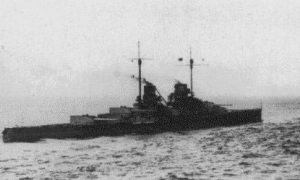 World War I, often called the Great War, not just for its epic scale but also for the sense that it was a more important and meaningful conflict than earlier European wars. One of the most legendary naval battles of the war was the Battle of Dogger Bank, which took place in the North Sea, near Dogger Bank, which is a large sandbank in a shallow area of the North Sea about 62 miles off the east coast of England, on January 24, 1915.
World War I, often called the Great War, not just for its epic scale but also for the sense that it was a more important and meaningful conflict than earlier European wars. One of the most legendary naval battles of the war was the Battle of Dogger Bank, which took place in the North Sea, near Dogger Bank, which is a large sandbank in a shallow area of the North Sea about 62 miles off the east coast of England, on January 24, 1915.
Britain was slowly bringing down the success of the submarine warfare Germany engaged in, and so a German admiral named Hipper made the tactical decision to attack three British towns on the North Sea. The first of the attacks was carried out on December 16, 1914. It was a massive shelling attack that left 18 civilians dead. The Germans deemed the grim attack a success. With that win, the Germans became more sure of themselves, and plans were made to repeat a similar attack. Unfortunately for the Germans, this time, the British Navy would be better prepared.
The Russians had captured a code book, and they shared the information with the Allies. That book allowed the 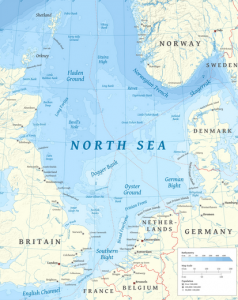 British to intercept and decode radio traffic. The information the British learned was that Hipper had set in motion plans to launch a new raid. British Admiral Beatty made a plan to beat the Germans at their own game. He took five battle cruises along with lighter cruisers and destroyers, and headed south to confront Hipper and his ships. On January 24, 1915, the that would be known as the Battle of Dogger Bank commenced. The effects of the battle were quite significant.
British to intercept and decode radio traffic. The information the British learned was that Hipper had set in motion plans to launch a new raid. British Admiral Beatty made a plan to beat the Germans at their own game. He took five battle cruises along with lighter cruisers and destroyers, and headed south to confront Hipper and his ships. On January 24, 1915, the that would be known as the Battle of Dogger Bank commenced. The effects of the battle were quite significant.
Upon sighting the British fleet, Hipper felt the numbers were too much to overcome, so he quickly ordered a retreat. Unfortunately for Hipper, the British ships were fast enough to reach him and the battle started. The German ship, Blutcher, was sunk leading to the deaths of 782 German sailors. Hipper’s ship, the Sevdlitz, suffered fatalities numbering 192. Beatty’s ship, the Lion, was left unable to fight when German attacks limited its ability to operate. It is quite likely that the British could have destroyed the entire German fleet, but Beatty worried about mines and the possible presence of submarines. Because of those worries, the German fleet was able to retreat, but it did suffer massive casualties. British casualties were relatively small, Just 15 sailors lost their lives. The British loss, while not trivial, was far less than the German losses.
While the Battle of Dogger Bank didn’t changed the overall course of the war, however, the end result of the 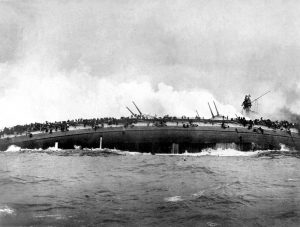 battle would have a major effect on how Germany would use its navy in engagements. Kaiser Wilhelm II decided that the navy would not take any more serious risks with its surface vessels. They knew that they were too easy to lose in a speed race. This would limit how they would be used in the war. Great Britain’s morale received a major boost following that battle. Troubling losses of military and civilian personnel had made the populace war-weary and very concerned over victory. The increase in morale had a strong effect on the troops and provided them with more resolve. In the end, Germany would lose, and the Battle of Dogger Bank had played a major part in that win. Of course, being able to break the code book, was the main reason for the win.
battle would have a major effect on how Germany would use its navy in engagements. Kaiser Wilhelm II decided that the navy would not take any more serious risks with its surface vessels. They knew that they were too easy to lose in a speed race. This would limit how they would be used in the war. Great Britain’s morale received a major boost following that battle. Troubling losses of military and civilian personnel had made the populace war-weary and very concerned over victory. The increase in morale had a strong effect on the troops and provided them with more resolve. In the end, Germany would lose, and the Battle of Dogger Bank had played a major part in that win. Of course, being able to break the code book, was the main reason for the win.

 National Handwriting Day was established in 1977, and because of John Hancock’s birthday, January 23rd, and the fact that he was a signer of the Declaration of Independence, it was decided that his birthday would be the ideal day for this unique holiday. The day was started as a way to re-introduce people to the pen and paper. In a world where most writing is done by computer, and notes are in a smartphone, the idea of writing on paper has almost become strange. I think about my Uncle Bill Spencer, the genealogy patriarch of the Spencer family, and how important handwritten letters always were to him, and I can understand how this lost art was so heartbreaking for him. When I look at treasures we have found that contain the handwriting of our parents or grandparents, it definitely brings us closer to them. At least it makes us feel closer to them.
National Handwriting Day was established in 1977, and because of John Hancock’s birthday, January 23rd, and the fact that he was a signer of the Declaration of Independence, it was decided that his birthday would be the ideal day for this unique holiday. The day was started as a way to re-introduce people to the pen and paper. In a world where most writing is done by computer, and notes are in a smartphone, the idea of writing on paper has almost become strange. I think about my Uncle Bill Spencer, the genealogy patriarch of the Spencer family, and how important handwritten letters always were to him, and I can understand how this lost art was so heartbreaking for him. When I look at treasures we have found that contain the handwriting of our parents or grandparents, it definitely brings us closer to them. At least it makes us feel closer to them.
The Writing Instrument Manufacturers Association, looks at National Handwriting Day as a chance for everyone to re-explore the purity and power of handwriting. Of course, their true motive is to promote the consumption of pens, pencils, and writing paper, but that isn’t the worst thing in the world. While this holiday was invented during the 1970s, it is considered to be a holiday that is increasing in importance with the passing of each year, because the art of handwriting is gradually being lost as more and more people use computers, tablets, and phones to email, instant message, and text their thoughts. Some believe that handwriting is as unique to a person as a fingerprint. I agree, because when I look at a handwritten note from someone I know, I can usually tell you who wrote it.
The ancient Romans were the first to develop a written script for correspondence based on aspects they borrowed from the Etruscan alphabet. However, after the Roman Empire fell, the development handwriting would come to rest with various monasteries. The problem with that is that with so many styles, people couldn’t read or understand what other people wrote…until the 8th century, when Charlemagne decided to put an English monk in charge of standardizing a handwriting script. The resulting script, Carolingian minuscule, was one that featured lowercase letters and punctuation and was designed to be easily read by candlelight. And it was a script that was highly used up until the 15th century.
During the 15th century, Johannes Gutenberg came up with a denser style of writing script for use on printed parchments and in books. This Gothic script was used extensively on his printing press, but was not really very popular with the people. Finally, Italian humanists decided to go back to a Carolingian script and then invented a cursive form of it that would eventually become known as italic. From that point on, penmanship was seen as a symbol of status. The schools began education young scholars in its use during the 18th century. The mid-19th century in the United States, brought a cursive writing system developed by my 3rd cousin 5 times removed, Platt Rogers Spencer. His penmanship style became known as the Spencerian Method. It was widely taught and many schools quickly adopted its use, but it was eventually replaced by the Palmer Method, invented by Austin Norman Palmer, at the turn of the century. The Palmer Method would eventually be replaced by the D’Nealian script, invented by Donald Thurber. It was introduced into American schools in the late 1970s.
Unfortunately, handwriting began to decline during the 1980s. Typewriters and word processors were used for writing instead of a pen and paper. We all thought it was the wave of the future, and the advance of the technological age, but I wonder if we somehow missed the bigger picture. Schools began to eliminate handwriting courses, replacing them with typewriting and eventually computer classes, and the art of 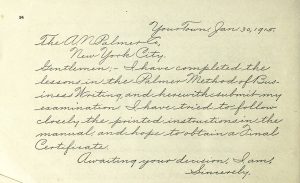
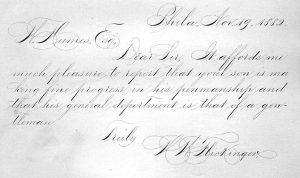 handwriting got lost in the excitement of something new. Now, it is in serious danger of disappearing altogether. As I contemplate the end of such an important part of history, and think of my Uncle Bill, and his understanding of its real importance, I realize just how big that loss really is.
handwriting got lost in the excitement of something new. Now, it is in serious danger of disappearing altogether. As I contemplate the end of such an important part of history, and think of my Uncle Bill, and his understanding of its real importance, I realize just how big that loss really is.

